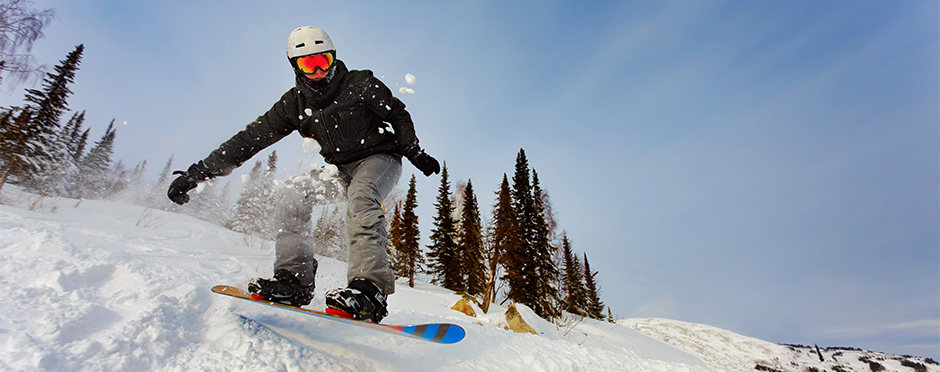
11 Ways to Enjoy Winter Activities Without Injuries
Leave a CommentWinter is a season brimming with opportunities for outdoor fun, from skiing and snowboarding to ice skating and sledding. However, these activities have potential risks, especially if proper precautions aren’t taken. Here are some tips to help you enjoy winter activities safely and minimize the risk of injury.
1. Warm Up Properly
Warming up is crucial before engaging in any winter sport or activity. Cold muscles are more prone to strains and injuries. Start with light aerobic exercises, such as jogging in place or brisk walking, to get your blood flowing. Follow this with dynamic stretches focusing on the major muscle groups used in your activity, such as the quadriceps, hamstrings, and shoulders.
2. Dress Appropriately
Layering your clothing is essential in cold weather. Start with a moisture-wicking base layer to keep sweat away from your skin. Add an insulating layer to retain body heat, and finish with a waterproof, wind-resistant outer layer. Proper clothing helps regulate body temperature and prevents frostbite and hypothermia.
3. Use Proper Equipment
Ensure that you use the correct equipment for your chosen winter activity and that it is in good condition. For skiing and snowboarding, this means checking that your bindings are properly adjusted, and your equipment is well-maintained. For ice skating, make sure your skates are sharp and well-fitted. Using equipment that is not properly fitted or maintained increases the risk of falls and injuries.
4. Know Your Limits
It’s easy to get carried away with enthusiasm, but it’s important to recognize and respect your physical limits. Avoid pushing yourself beyond your skill level, especially if you’re new to a sport. Gradually build up your endurance and proficiency to prevent overexertion and related injuries.
5. Stay Hydrated and Nourished
Staying hydrated is important even in the cold weather. Drink plenty of water throughout the day to keep your body functioning optimally. Additionally, eat a balanced meal before heading out. Foods rich in complex carbohydrates and proteins provide sustained energy for physical activity.
6. Pay Attention to Weather Conditions
Winter weather can change rapidly. Always check the weather forecast before heading out and be aware of any warnings or advisories. Poor visibility, icy conditions, or severe cold can significantly increase the risk of accidents. If conditions are not ideal, consider postponing your activity or opting for a safer indoor alternative.
7. Practice Good Technique
Proper technique is essential for preventing injuries in any sport. Take the time to learn and practice the correct form for your chosen activity. This includes maintaining a balanced stance and using proper turning techniques for skiing. For ice skating, focus on maintaining a low center of gravity and proper edge control. Consider taking lessons from a qualified instructor to refine your skills.
8. Take Breaks
It’s important to take regular breaks during winter activities. Fatigue can lead to poor judgment and decreased coordination, increasing the risk of accidents. Listen to your body and rest when needed. This also allows you to warm up, hydrate, and refuel.
9. Pay Attention to Surface Conditions
Whether you’re skiing down a slope or walking on ice, being aware of surface conditions is crucial. Look out for patches of ice, uneven terrain, or obstacles. When walking on icy surfaces, take smaller, deliberate steps to maintain balance and reduce the risk of slipping.
10. Learn and Practice First Aid
Knowing basic first aid can be invaluable in the event of an injury. Familiarize yourself with the treatment for common winter-related injuries, such as frostbite, hypothermia, and sprains. Carry a basic first aid kit with you during winter activities and know how to use its contents.
11. Use Safety Gear
Appropriate safety gear is essential for many winter sports. Helmets, knee pads, wrist guards, and other protective equipment can help prevent serious injuries. Always wear the recommended safety gear for your activity and ensure it is properly fitted and secured.
Winter activities can be enriching and fun, but safety should always be a priority. By following these tips, you can minimize the risk of injury and maximize your enjoyment of the season. However, if you experience pain or discomfort that affects your ability to enjoy winter activities, consider consulting with a physical therapist. They can help assess your condition, provide targeted treatments, and offer strategies to improve mobility and reduce pain, ensuring you stay active and comfortable throughout the winter months.
*Per federal guidelines, beneficiaries of plans such as Medicare, Medicaid, Tricare, VHA and other federally funded plans are not eligible for free assessments.
The Athletico blog is an educational resource written by Athletico employees. Athletico bloggers are licensed professionals who abide by the code of ethics outlined by their respective professional associations. The content published in blog posts represents the opinion of the individual author based on their expertise and experience. The content provided in this blog is for informational purposes only, does not constitute medical advice and should not be relied on for making personal health decisions.
